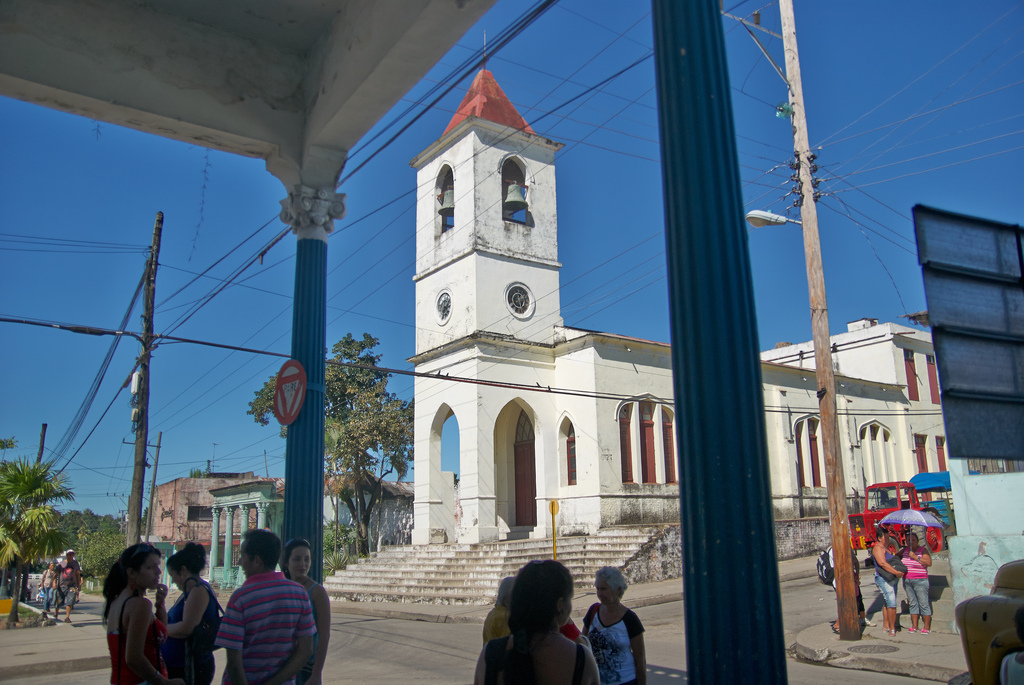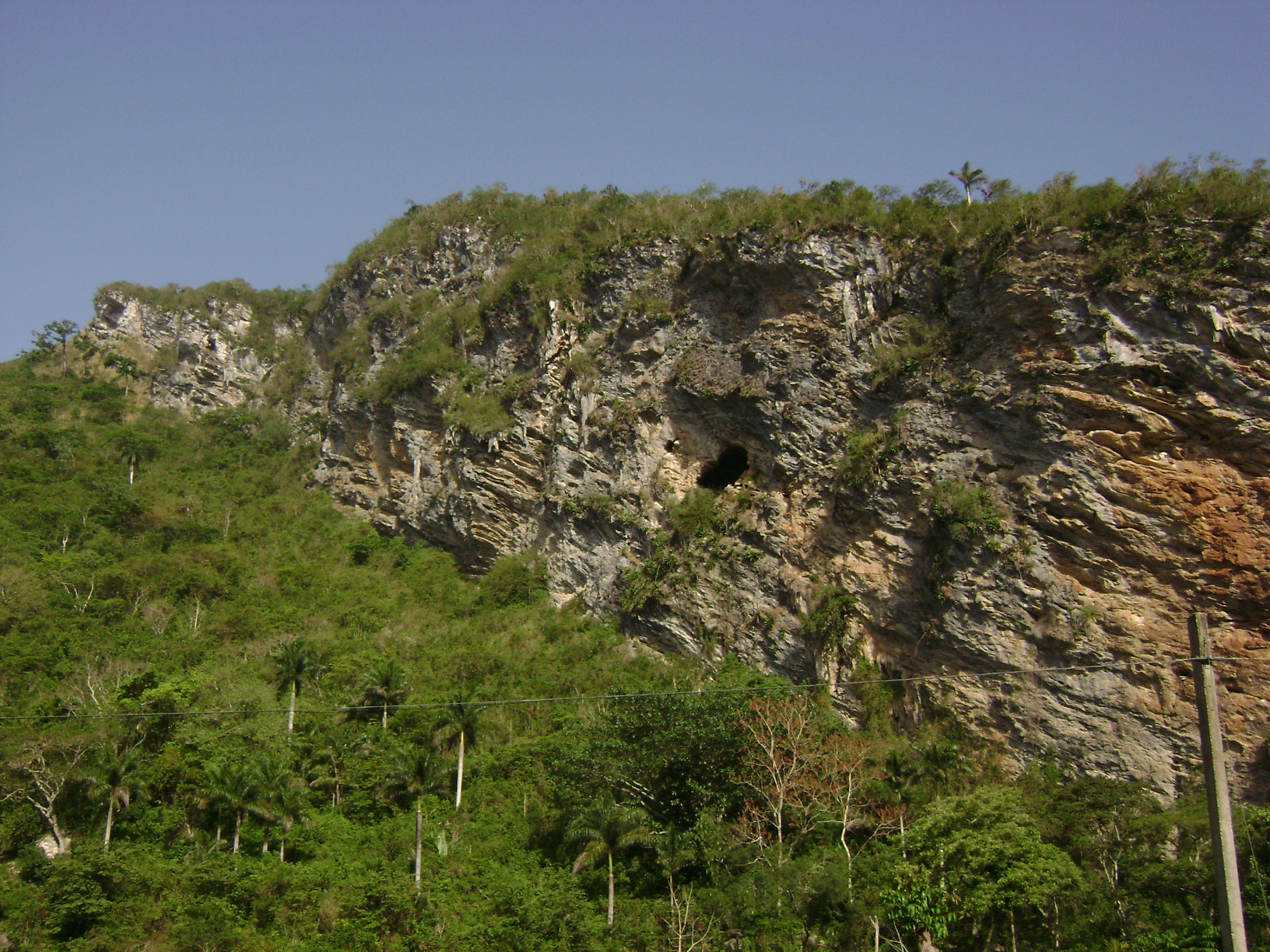|
Mataguá
Mataguá is a Cuban village and ''consejo popular'' ("people's council", i.e. hamlet) of the municipality of Manicaragua, in Villa Clara Province. With a population of ca. 10,000, it is the most populated village in the municipality after Manicaragua. History Founded in 1868 as a farm estate owned by a Spanish man named Jacinto Rivero, it was sold some years later to Susano Rodríguez, that changed the aboriginal name of Mataguá to ''Palma Sola''. The property was transferred in 1904 to the brothers Pablo and Belisario Millar Vila. The new owners changed the name of the estate, which returned to be the aboriginal one. The village was connected to the mains in 1927, and had a train station on a no longer active line. During the Cuban Revolution, Mataguá was taken by the revolutionaries on 22 December 1958, one week before the Battle of Santa Clara, by a group led by the commander Raúl Nieves. Geography Located 11 km in north of Manicaragua and 27 in south of the city of San ... [...More Info...] [...Related Items...] OR: [Wikipedia] [Google] [Baidu] |
Manicaragua
Manicaragua () is a municipality and mountain town in the Villa Clara Province of Cuba. It is located in the Escambray Mountains at the southern part of Villa Clara, bordering the provinces of Cienfuegos to the west and Sancti Spíritus to the east. History The area was originally settled by the Siboney, a Taíno people native of Cuba. Some toponyms of settlements included in the municipality (as Manicaragua, Mataguá, Jibacoa etc.) have an Arawak origin. ( EcuRed) Geography The municipality includes the town proper (with circa 23,000 inhabitants in 2003) and several villages as Arroyo Seco, El Mango, |
Motagua River
The Motagua River () is a river in Guatemala. It rises in the western highlands of Guatemala where it is also called Río Grande, and runs in an easterly direction to the Gulf of Honduras. The final few kilometres of the river form part of the Guatemala–Honduras border. The Motagua River basin covers an area of and is the largest in Guatemala. The Motagua River is believed to be the number one most plastic-emitting river in the world, contributing around two per cent of global plastic pollution emissions into the world's oceans annually. Overview The river runs in a valley that has the only known source of jadeitite (jade) in Mesoamerica, and was an important commerce route during the Pre-Columbian era. The important Maya site of Quirigua is near the river's north bank, as are several smaller sites with jade quarries and workshops. The Motagua river valley also marks the Motagua Fault, the tectonic boundary between the North American and the Caribbean Plates. The Motag ... [...More Info...] [...Related Items...] OR: [Wikipedia] [Google] [Baidu] |
Güinía De Miranda
Güinía de Miranda, sometimes shortened as ''Güinía'', is a Cuban village and ''consejo popular'' ("people's council", i.e. hamlet) of the municipality of Manicaragua, in Villa Clara Province. It has a population of circa 3,000 and the council's administrative territory covers an area of 114.2 km². History Founded in 1536, at the end of the 16th century it was an estate depending from Sancti Spíritus. In 1862 Güinía was made up of 50 buildings and had a population of 300.Güinía de Miranda on EcuRed Until 1976, it was part of the municipality of . Geography Güinía de Miranda is a hilltow ...[...More Info...] [...Related Items...] OR: [Wikipedia] [Google] [Baidu] |
Jibacoa (Manicaragua)
Jibacoa is a Cuban village and ''consejo popular'' ("people's council", i.e. hamlet) of the municipality of Manicaragua, in Villa Clara Province. As of 2004, it had a population of 3,101; and the council's administrative territory covers an area of 78.5 km².Jibacoa on EcuRed History The village was founded in 1961, soon after the . Its toponyms, as well as other included in the municipality (as Manicaragua, , etc.) have an |
Ofelia Domínguez Navarro
Ofelia Domínguez Navarro (Mataguá, December 9, 1894 - Havana, July 7, 1976) was a Cuban writer, teacher, lawyer, feminist and activist. She was a proponent of the rights of women and illegitimate children. As a journalist, Domínguez Navarro supported feminist views while writing for various media in Cuba, and in 1935, became the first woman newspaper director in the country with '' La Palabra''. She was noted as one of the leading intellectuals of the decades of 1930 and 1940, with Mirta Aguirre and Mariblanca Sabas Aloma. Biography The daughter of Florentino Dominguez and Paula Navarro, she was born into a family with revolutionary ideals who were participant activists. Her mother passed away when she was just fourteen years old, and the care of her younger siblings fell on her. However, she was able to still graduate from high school. She graduated from university in 1918 with a Bachelor of Science, followed by a degree in Civil law from the University of Havana in 1921 ... [...More Info...] [...Related Items...] OR: [Wikipedia] [Google] [Baidu] |
Báez
Báez is a Cuban village and ''consejo popular'' ("people's council", i.e. hamlet) of the municipality of Placetas, in Villa Clara Province. In 2011 it had a population of around 7,000. History The village was founded in 1804 with the name ''Hato de La Manigua'', and some years later was named after a Spanish general named Guillermo Báez. Until the 1977 administrative reform, it was part of the municipality of Santa Clara.Guije.comSanta Clara _Geography Báez_is_located_on_a_valley_between_the_Escambray_Mountains.html" ;"title="/ref> Geography Báez is located on a valley between the Escambray Mountains">/ref> Geography Báez is located on a valley between the Escambray Mountains and the borders with Sancti Spíritus Province, below a hillock and east of Agabama Reservoir. Nearest village is Guaracabulla, located 5 km north, and Agabama, 11 km south. It is 16 km from Fomento, 19 from Placetas, 26 from Mataguá, 36 from Manicaragua and 40 from Santa Clara and ... [...More Info...] [...Related Items...] OR: [Wikipedia] [Google] [Baidu] |
El Salto Del Hanabanilla
El Salto del Hanabanilla, also known as Hanabanilla, is a Cuban village and ''consejo popular'' ("people's council", i.e. hamlet) of the municipality of Manicaragua, Villa Clara Province.El Salto del Hanabanilla on EcuRed As of 2014 the town has 137 homes making up a total of 436 inhabitants. Is a mountain resort famous for the homonym lake. History El Salto del Hanabanilla was originally settled by Taino people; so far 35 aboriginal villages have been discovered around this area. After the |
Santa Clara, Cuba
Santa Clara is the capital city of the Cuban province of Villa Clara Province, Villa Clara. It is centrally located in the province and Cuba. Santa Clara is the List of cities in Cuba, fifth-most populous Cuban city, with a population of nearly 250,000. History Santa Clara was founded by 175 people on July 15, 1689. 138 of them represented two large families already living in the area, who owned land next to the new city. The other 37 came from seven other families and included a priest and governor, all originating in the coastal city of San Juan de los Remedios. The population of Remedios, Cuba, Remedios had to choose between leaving their city, constantly being besieged by pirates, or staying. While most decided to stay, 37 people traveled south to the interior. On June 1, 1689, they arrived at a hill, joining two other families already present at the site. According to tradition, a mass was celebrated under a tamarind tree and Santa Clara was founded. Since then, the pla ... [...More Info...] [...Related Items...] OR: [Wikipedia] [Google] [Baidu] |
List Of Cities In Cuba ...
This is a list of cities in Cuba with at least 20,000 inhabitants, listed in descending order. Population data refers to city proper and not to the whole municipality, because they include large rural areas with several villages. All figures are accurate and provincial capitals are shown in bold. See also * List of places in Cuba * Municipalities of Cuba * Provinces of Cuba References External links 2012 population statistics of Cuba {{North America topic, List of cities in Cuba, List of cities in Cities * Cuba Cuba ( , ), officially the Republic of Cuba ( es, República de Cuba, links=no ), is an island country comprising the island of Cuba, as well as Isla de la Juventud and several minor archipelagos. Cuba is located where the northern Caribbea ... [...More Info...] [...Related Items...] OR: [Wikipedia] [Google] [Baidu] |
Cienfuegos
Cienfuegos (), capital of Cienfuegos Province, is a city on the southern coast of Cuba. It is located about from Havana and has a population of 150,000. Since the late 1960s, Cienfuegos has become one of Cuba's main industrial centers, especially in the energy and sugar sectors. The city is dubbed ''La Perla del Sur'' (Pearl of the South). Although ''Cienfuegos'' literally translates to "one hundred fires" (''cien'', "one hundred"; ''fuegos'', "fires"), the city takes its name from the surname of José Cienfuegos, Captain General of Cuba (1816–19). In 2005, UNESCO inscribed the '' Urban Historic Centre of Cienfuegos'' on the World Heritage List, citing Cienfuegos as the best extant example of early 19th century Spanish Enlightenment implementation in urban planning. The downtown area contains six buildings from 1819–50, 327 buildings from 1851–1900, and 1188 buildings from the 20th century. There is no other place in the Caribbean which contains such a remarkable cluster o ... [...More Info...] [...Related Items...] OR: [Wikipedia] [Google] [Baidu] |
Placetas
Placetas () is a city in the Villa Clara Province in the center of Cuba; before the change in the country's government in 1959 the province was called Las Villas. The town is also known as ''La Villa de los Laureles'' because of its wild laurel trees. Placetas is also a ''municipio'', one of 13 subdivisions of the Villa Clara Province. Cuba's geographical center, Guaracabulla, is located in this municipality. History Placetas was founded on September 9, 1861 mainly due to the sugar production industry. Nowadays, the main produce of the area is tobacco. The main contribution to its foundation came from Jose Martinez-Fortun y Erles, a Spanish Marques and former colonel in the Spanish Army. The town is located on the Carretera Central road, which cuts through the town. The town's position on this road has allowed it to serve as a stop for many travellers. Placetas has grown considerably over the years, being declared a town in 1881 and a city in 1925. In 1879 it was established as ... [...More Info...] [...Related Items...] OR: [Wikipedia] [Google] [Baidu] |
Trinidad, Cuba
Trinidad () is a town in the province of Sancti Spíritus, central Cuba. Together with the nearby Valle de los Ingenios, it has been a UNESCO World Heritage site since 1988, because of its historical importance as a center of the sugar trade in the 18th and 19th centuries. Trinidad is one of the best-preserved cities in the Caribbean from the time when the sugar trade was the main industry in the region. History Trinidad was founded on December 23, 1514 by Diego Velázquez de Cuéllar under the name Villa de la Santísima Trinidad. Hernán Cortés recruited men for his expedition from Juan de Grijalva's home in Trinidad, and Sancti Spíritus, at the start of his 1518 expedition. This included Pedro de Alvarado and his five brothers. After ten days, Cortes sailed, the alcayde Francisco Verdugo failing to prevent Cortes from leaving, despite orders from Diego Velázquez.Diaz, B., 1963, The Conquest of New Spain, London: Penguin Books, The Narvaez Expedition landed at Trinida ... [...More Info...] [...Related Items...] OR: [Wikipedia] [Google] [Baidu] |




